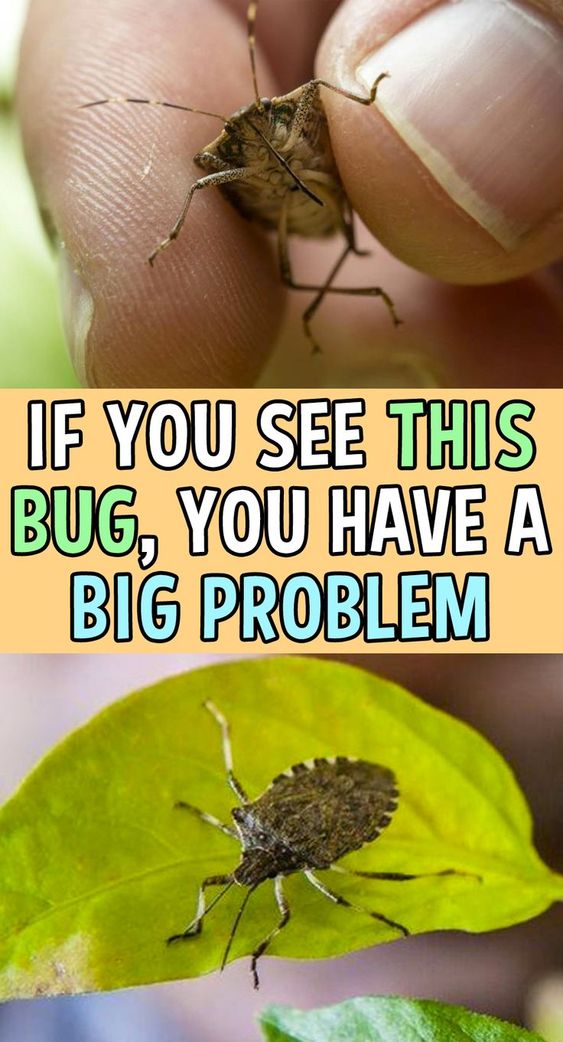If You See This Bug, Follow These Steps ASAP!
There is one brown bug experts warn people to keep their eyes peeled for, ones that lurk in flowerbeds, grass, and cracks in the house. It might look harmless, but this pesky insect is known to be a destructive gardener.
Stay alert! If spotted, people should follow these upcoming steps.
It’s Just A Tiny Brown Bug
Finding insects can be challenging, particularly in areas with dense vegetation or lots of flowers. They tend to mix in, particularly if the bug is little and brown.
Regretfully, professionals advise consumers to look out for precisely this.
The Body Resembles A Shield
Experts urge people to keep their eyes peeled when outside because a tiny brown bug might be lingering in their yard. With six legs and a body resembling a medieval shield, this bug is unique but still tricky to spot.
Fully grown, they only reach around 0.7 inches long.
Small Does Not Mean Harmless
These brown critters might be tiny, but their small stature does not stop them from wreaking a whole lot of havoc if they go undetected.
That is why people need to be hyper-vigilant because these bugs walk, have wings, and can find themselves in unlikely places — like a house.
They Will Find Their Way Into The House
These wings are not to be taken lightly. If they feel the need, these bugs will fly up and find their way into a person’s house, whether it’s the walls, cracks, or even the curtains.
That’s why it is so important for people to be aware if they see brown bugs around the yard.
The Brown Marmorated Stink Bug
Being hyper-aware of the insects flying around the yard is important, especially when it comes to the Halyomorpha halys, the brown marmorated stink bug.
Yes, it is a horrible name for a horrible bug that wants to do nothing more than infest gardens and homes if they are able to.
It Was Accidently Introduced To The USA In 1998
The brown marmorated stink bug actually originated in Asia, primarily Korea, China, and Japan. It was found in Allentown, Pennsylvania, in 1998, where scientists believe it was accidentally brought over from its home region.
Sadly, it did not take long for the stink bug to become a huge pest in the Eastern part of the United States.
Max Barclay Has An Idea Of How The Bug Traveled
Backtracking to its origins, though, one expert believes they understand how the invasive stink bug could have made its way across various countries.
The head of the Coleoptera collection at the National History Museum, Max Barclay, believes it all comes down to the bug first finding its way over to the United Kingdom.
He Predicted They’d Arrive Back In 2014
In 2014, Barclay commented, saying he believed the brown marmorated stink bug would make its way from the east to Britain and that it was “only a matter of time.”
Well, he was not wrong, as the first stink bug was spotted in the gardens of the Natural History Museum in 2020.
Shipping Crates, Pallets, And Packaging
Sadly, that prediction also came with other bad news — the stink bugs would come, and they would not leave, establishing themselves quickly.
According to Barclay, “since stink bugs are moving indoors to hibernate during the winter, they will have arrived in shipping crates, pallets, and packaging from global trade.”
They Thrive In Warm Weather
These insects do not fare well in cold climates, so they make their way into the shipping crates to sleep through the chilly months, something called “diapause.” When the winter months are over, all bets are off.
Stink bugs not only love warm weather, but they tend to thrive in it.
Climate Change Is Helping The Stink Bug Invade New Areas
With the ongoing climate change debate and the Earth getting warmer and warmer each year, humanity could be looking at a major stink bug invasion!
The International Journal of Biometeorology did research, predicting that by the 2010s, the bugs would make their way to Switzerland, making the country a new home.
They Made Their Way To Switzerland
Their investigation was accurate. According to the publication, “In Switzerland, crop damage and increasing populations have been observed since 2017 and related to increasing temperatures.”
Dr. Tim Haye, one of the paper’s specialists, has some insights regarding the relationship between the stink bug and climate.
It Is Bad News For The Swiss People
Working for the Centre for Agriculture and Biosciences International, Dr. Haye knows a think of two about invasive insects, including the stink bug. In the paper, he wrote, “There is strong evidence that climate change is already modifying species.”
“It is evident that the number of non-native species will increase and that climate change will promote their establishment. The north-western part of Switzerland could become completely suitable for H. halys.”
Higher Altitudes Aren’t Safe Either
In the paper, Dr. Haye went on to explain where in Switzerland the stink bugs would infest. He said the insects would head “Southwards, the projected range expansion would reach the foothills of the Alps.”
He continued, “And higher latitudes in the alpine valleys could become suitable under future climate conditions. Monitoring the spread and population development in the north-western part of Switzerland, and higher altitudes of the valleys in the south, are recommended.”



